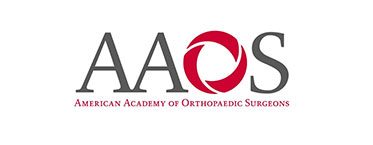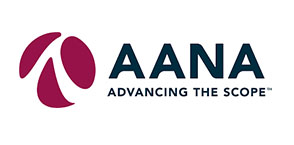
What is Quadriceps Tendon?
Quadriceps tendon is a thick tissue located at the top of the kneecap. The quadriceps tendon works together with the quadriceps muscles to allow us to straighten our leg. The quadriceps muscles are the muscles located in front of the thigh.
Quadriceps tendon rupture most commonly occurs in middle-aged people who participate in sports which involve jumping and running. Quadriceps tear occurs by a fall, direct blow to the leg and when you land on your leg awkwardly from a jump. Other causes include tendonitis (inflammation of quadriceps tendon), diseases such as rheumatoid arthritis, diabetes mellitus, and infection which weakens the quadriceps tendon. Use of medications such as steroids and some antibiotics also weakens the quadriceps tendon.
Symptoms of Quadriceps Tendon
When the quadriceps tendon tear, the patella may lose its anchoring support in the thigh, as a result, the patella moves towards the foot. You will be unable to straighten your knee and upon standing the knee buckles upon itself.
Diagnosis of quadriceps Tendon
To identify a quadriceps tendon tear your doctor will ask about your medical history and perform a physical examination of your knee. Some imaging tests, such as an X-ray or MRI scan may be ordered to confirm the diagnosis. X-ray of the knee is taken to know the position of the kneecap and MRI scan to know the extent and location of the tear.
Treatment of quadriceps Tendon
Quadriceps tendon tear can be treated by non-surgical and surgical methods. Non-surgical treatment involves the use of knee braces to immobilize the knee. Crutches may be needed to prevent the joint from bearing weight. Physical therapy may be recommended to restore the strength and increase range of motion of the knee.
Surgery is performed on an outpatient basis; it cannot be repaired arthroscopically since the tendon is outside the joint. The goal of the surgery is to re-attach the torn tendon to knee cap and to restore the normal function of the knee. Sutures are placed in the torn tendon which is then passed through the holes drilled in the knee cap. The sutures are tied at the bottom of the knee cap to pull the torn edge of the tendon back to its normal position.
Surgical complications include weakness and loss of motion. In some cases, the tendon which is re-attached may detach from the knee cap or re-tears may also occur. Other complications such as pain, infection and blood clot may be observed.
After the Surgery
Following surgery, a brace may be needed to protect the healing tendon. Complete healing of the tendon will take about 4 months.
Related Topics
- Knee Arthroscopy
- ACL Reconstruction
- ACL Reconstruction with Quadriceps Tendon
- Cartilage Transplantation
- Meniscal Surgery
- PCL Reconstruction
- LCL Reconstruction
- MCL Reconstruction
- Meniscus Replacement
- Knee Cartilage Restoration
- Knee Ligament Reconstruction
- Meniscal Transplantation
- Meniscus Root Repair
- Quadriceps Tendon Repair
- Knee Osteotomy
- Meniscectomy
- Mosaicplasty
- Revision Knee Ligament Reconstruction
- Posterolateral Corner (PLC) Reconstruction
- Compartment Decompression
- Lysis of Adhesions with Manipulation Under Anesthesia (MUA)
- Partial Arthroscopic Meniscectomy
- Patellofemoral Stabilization
- Combined Hyaluronic Therapy for the Knee
- Primary ACL Repair
- Quadriceps Tendon Autograft for Anterior Cruciate Ligament Reconstruction
- Cartilage Restoration of the Patellofemoral Joint
- Patellofemoral Realignment
- Tibial Tubercle Transfer
- Matrix Induced Autologous Chondrocyte Implantation (MACI)
- Arthroscopic Debridement
- LPFL Reconstruction
- Failed Anterior Cruciate Ligament (ACL) Reconstruction
- Posterolateral Corner Reconstruction
- Prior Meniscectomy
- Chondroplasty
- Physeal Sparing Reconstruction of the Anterior Cruciate Ligament
- Bone-Patellar Tendon-Bone (BPTB) Allograft
- Bone-Patellar Tendon-Bone (BPTB) Autograft
- Proximal Tibial Osteotomy
- Hamstring Autograft
- Hamstring Allograft
- High Tibial Osteotomy
- Multiligament Reconstruction of the Knee
- Patellar Tendon Repair
- Medial Patellofemoral Ligament Reconstruction
- Distal Realignment Procedures
- Arthroscopic Reconstruction of the Knee for Ligament Injuries
- Cartilage Replacement
- Autologous Chondrocyte Implantation
- Subchondroplasty
- Partial Meniscectomy
- Cartilage Microfracture
- Knee Trauma Reconstruction
- Physeal Sparing Surgery (Anderson's Technique)
- Physeal Sparing Surgery (Micheli-KocherTechnique)
- Pharmacological Interventions for Knee Injuries
- Viscosupplementation
- Physical Therapy for Knee
- Intraarticular Knee Injection
- Non-Surgical Knee Treatments
- Physical Examination of the Knee
- Pre-op and Post-op Knee Guidelines
- Am I a Candidate for Knee Surgery?




